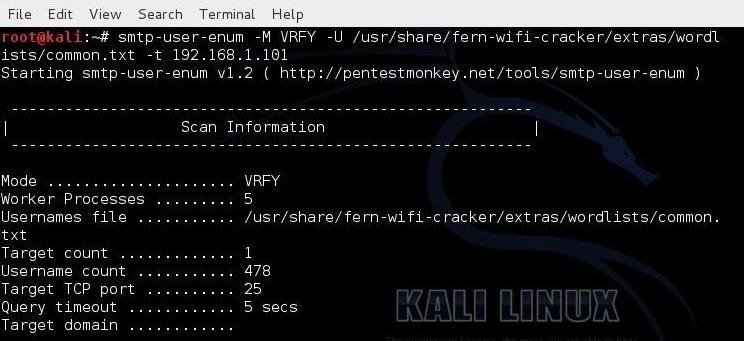

MitigationĪ number of different methods can be used to mitigate this threat. The mereįact that an SSH server is running and accessible from the Internet will invite attacks.
#Brute force port 25 software
Still be guessed by automated tools even without a software vulnerability in SSH or its implementations.
#Brute force port 25 password
For example, common libraries used by many implementations of SSH – like OpenSSL – may be reported.Įven so, brute‐force password guessing represents a more common threat. Does That Make it Secure?ĭespite its wide acceptance, there are still threats and occasionally software vulnerabilities associated with using Stay actively aware of what’s on their networks by performing periodic port scans b Often on networks with SSH enabled (by default) even if it hasn’t explicitly been turned on. Unexpected types of devices provide SSH access by default, including control systems equipment. While SSH is popularly associated with UNIX or Linux workstations and servers, many different and sometimes Organizations should look carefullyįor these “quiet” attempts, as they may be an indication of a careful, more directed attack. Systems by only trying a few careful attempts before waiting to try again later. TheseĪre often easy to spot because unlike web or email traffic, systems running SSH typically only expect infrequentĬonnections from a limited number of IPs.īecause these high volume scans can be so visible, some attackers may also try to evade intrusion detection Meeting a certain set of criteria (in this case, systems running SSH).ĭue to the wide attack surface of SSH, organizations may see a particularly high number of scans for SSH. Instead, scans will often be performed against a wide range of IP addresses looking for any system This doesn’t necessarily mean that the perpetrator is specifically targeting an Hundreds or thousands of login attempts over a relatively short time period, the system most likely has been the Organizations should check logs for generic port scans as well as system access attempts. Responds, a brute force attack may occur. In order to find running SSH services on networks they are unfamiliar with (or even the entire internet) to bruteforce,Īttackers will probe a large number of IPs on port 22 – the default TCP listening port for SSH. That contain commonly used passwords, or they may try all combinations of a character set to guess a password. Such applications may use default password databases or dictionaries Brute‐force login tools exist for just about any service that allows remote access.Īttackers can use brute‐force applications, such as password guessing tools and scripts, to try all the combinations What Are Brute Force AttacksĪ brute‐force authentication attack is a method of obtaining a user's authentication credentials by guessing Network perimeters, and when to report such occurrences.
#Brute force port 25 how to
This activity has been going on for a number of years in the IT sector andĭemonstrates the need for operators of control systems to understand this threat, what to look for, how to protect Common targets for these brute‐force attacks are systems that provide SFP Secondary Cluster: Unrestricted AuthenticationICS‐CERT is aware that many organizations have been seeing a large number of attempts to access industrialĬontrol systems by remote attackers. The two main view structures are Slices (flat lists) and Graphs (containing relationships between entries). View - a subset of CWE entries that provides a way of examining CWE content. OWASP Top Ten 2010 Category A3 - Broken Authentication and Session Management OWASP Top Ten 2004 Category A3 - Broken Authentication and Session Management In addition, relationships such as PeerOf and CanAlsoBe are defined to show similar weaknesses that the user may want to explore.Ĭategory - a CWE entry that contains a set of other entries that share a common characteristic. These relationships are defined as ChildOf, ParentOf, MemberOf and give insight to similar items that may exist at higher and lower levels of abstraction. This table shows the weaknesses and high level categories that are related to this weakness. Improper Control of Interaction Frequency Class level weaknesses typically describe issues in terms of 1 or 2 of the following dimensions: behavior, property, and resource. More specific than a Pillar Weakness, but more general than a Base Weakness.

Class - a weakness that is described in a very abstract fashion, typically independent of any specific language or technology.


 0 kommentar(er)
0 kommentar(er)
